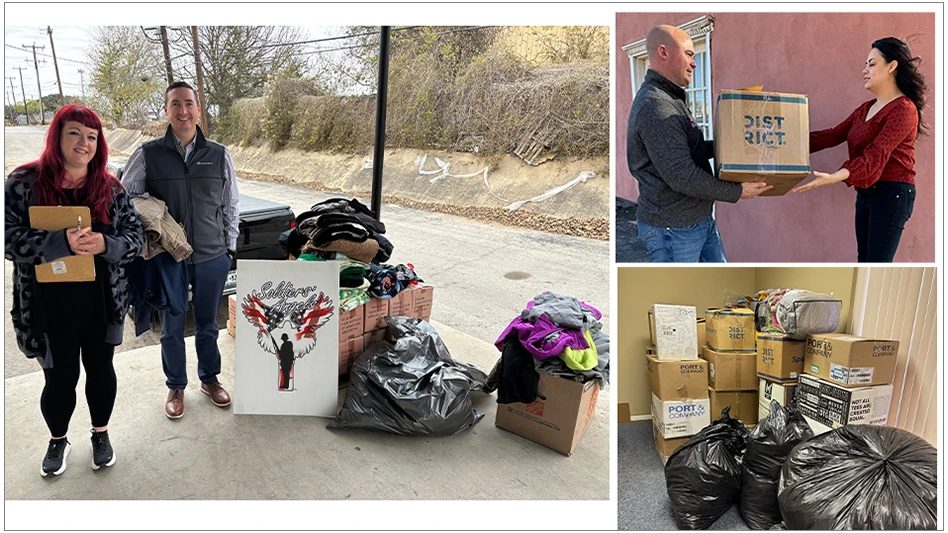The word “biohazard” is a relatively new working term for many pest management professionals. But it shouldn’t be. Biohazard refers to the risks associated with the interaction and/or handling of biological organisms. The term is most often associated with biological wastes resulting from animal experimentation. But it also includes on-the-job events associated with contacting wild animals, ectoparasites or those areas where pathogenic microorganisms may be present.
Let’s examine the biohazards associated with the work of the pest management professional. First, we should note that pathogenic microorganisms claim about 20 million lives worldwide each year. Most of these deaths occur in underdeveloped countries where resources are limited and sanitation programs are not well established. In the developed nations, pathogens do not impact as strongly because healthy populations can fight off many of the pathogenic microorganisms, unless encountered in massive numbers. And when this occurs, antibiotics and other modern drugs are usually effective. Furthermore, modern-day sanitation and pest management programs help to eliminate many pathogens in buildings.
But as professionals, we know only too well that wild animals use our homes and yards for habitat and harborage. These animals sometimes also carry various parasites or pathogens on or within their bodies. Attics, crawlspaces, garages, barns and various building voids are commonly invaded by mice, rats, bats, raccoons, squirrels, opossum, birds and other animals. Consider the diseases rabies (virus), Lyme disease (bacteria), histoplasmosis (fungus), salmonellosis (bacteria), rat bite fever (bacteria), leptospirosis (bacteria), plague (bacteria), and hantavirus, as well as various parasites such as raccoon roundworm. The pathogens that cause these diseases may be present in wild animal populations and are transmitted to people directly from contact or indirectly via an animal’s body fluids or feces. Other diseases are transmitted via the bite of an ectoparasite vector such as a flea or tick.
In August 1997, the Centers for Disease Control in Atlanta issued a formal warning advising anyone who has had contact with a bat (i.e. not necessarily bitten), and who cannot confirm the bat rabid or not, to get rabies shots. This warning came as a result of the death of two men in 1997 and one girl in 1995, all of whom died of bat-borne rabies, yet none of the victims had actually been bitten by bats. The CDC concluded that “seemingly insignificant contact with bats may result in viral transmission.”
Certainly, pest management professionals must routinely journey into the dark, hidden, damp, dirty and confined areas beneath and within buildings where animal feces, urine, blood, saliva, ectoparasites, fur, nesting materials and dead carcasses may also be present. Should you go into these “jungles” unprotected? I don’t think so.
PREVENTION TIPS. Here are some general comments and recommendations for protecting yourself from biohazards:
- When working in crawlspaces, attics, deck and porch voids, or any area where wild animals may be present, wear gloves, goggles, respirators and a bump cap. The value of a bump cap quickly becomes crystal clear for those times you unexpectedly encounter a wild animal in a dark and confined space.
- Use disposable nitrile gloves for handling routine mouse or rat traps. And when dealing with the larger wildlife traps and equipment, wear heavy-duty gloves to provide protection from the traps and captured wild animals. For general inspections in crawlspaces and attics, heavy-duty gloves are especially important. You may encounter a wild animal that the homeowner had no idea was present. When unexpectedly frightened, these animals can inflict serious bites and scratches blazingly quick. Heavy gloves will also guard against snake, bat and spider bites, and from sharp objects.
- In areas where deer mice are present, wear HEPA filter cartridges on respirators, and spray disinfectants on mouse traps containing deer mouse carcasses. Regular respirator filter cartridges used for pesticide vapors will not protect you against virus particles.
- Use insect repellent on clothing when venturing into heavy vegetation or within animal dens in buildings where fleas or ticks may be present.
- Thoroughly and frequently wash your hands following activities in environments where wild animals or insects have been active. Keep portable cleaning items on the truck.
REDUCE THE CHANCES. Do biohazard protection activities increase the “hassle factor” associated with performing daily pest management activities? Yes. Is it overkill? I don’t think so. But I have heard the argument many times: “I’ve never worn any protection equipment over the years, when working with rodents and other animals, and have never had a problem. And besides, I’ve heard the chances of contracting a disease is low.”
This is a valid argument. The chances of encountering dangerous pathogens on the job are low and a healthy body can combat most harmful microorganisms in small quantities. But not all of them, and not all the time. Additionally, no one can evaluate your situation; your crawlspace, the pathogenic load of the animals or their habitats you encounter, or your specific resistance to these pathogens.
The point is you want to be protected for that time when you unexpectedly encounter a bat, raccoon, flea, tick or mite vector, or your hands brush up against contaminated urine or animals feces. When it comes to biohazards, be proactive and use the equipment. There is a jungle out there on your job. And most of it you cannot even see.

Explore the October 1997 Issue
Check out more from this issue and find your next story to read.
Latest from Pest Control Technology
- Envu Announces Lichtenstein as Chairman of Board of Directors
- Spider Expertise, Cockroach Species, AI Tools for Disease Transmission Hot Topics at Purdue Conference
- Rose Pest Solution Promotes Kandler to District Manager of Columbus (OH) Office
- Webinar: Maximizing Cash Flow — Key Strategies for Business Growth
- WorkWave Announces Wavelytics
- Rising Rat Populations Linked to Warming Temperatures, Urban Growth, Study Finds
- How Might the 2024 Elections Impact PCOs
- Keeping Track of Termite Identification





